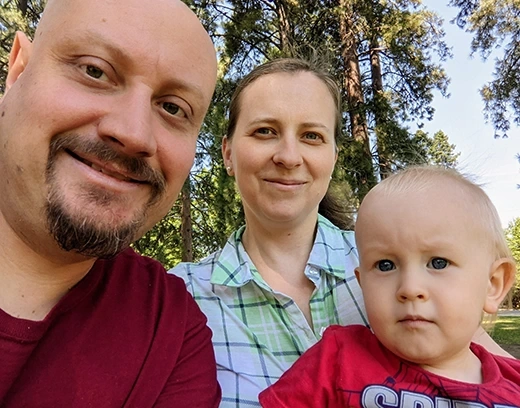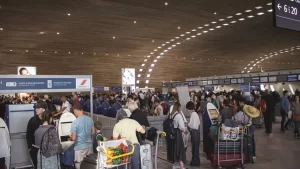A Detailed Guide to the F2A Visa: Reuniting Families in the U.S

Established for spouses and unmarried children under 21 of U.S. permanent residents, the family-based F2A visa is an immigration visa. By allowing these immediate relatives to accompany their loved ones in the United States, this visa category enables families to be reunited. A good immigration experience depends on knowing the F2A visa category and its application procedure.
The F2A Visa’s Eligibility Criteria
A lawful permanent resident (LPR) of the United States is required to be qualified for the F2A visa. Either the spouse or unmarried children under 21 must show their relationship with the petitioner by official records such as marriage and birth certificates.
Applying for an F2A Visa
-
Petition Submission
The U.S. permanent resident submitting Form I-130, Petition for Alien Relative with the U.S. Citizenship and Immigration Services (USCIS), starts the F2A visa procedure. This form creates the family link and is essential for beginning the immigration process.
-
Case Processing and Approval
USCIS will accept the petition, and then the National Visa Center (NVC) will get it. The NVC starts with dealing with the application after assigning a case number. This phase consists of providing relevant documentation and paying related fees.
-
Document Submission

Important documents needed for the F2A visa consist of:
o Proof of Relationship: Marriage certificates, birth certificates, and other records attesting to the petitioner’s relationship to the recipient.
o Form I-864 Affidavit of Support: This documentation guarantees the petitioner will not rely on public support as the petitioner can demonstrate to the recipient they can afford it.
o Civil Documents: Copies of the beneficiary’s and petitioner’s passports, police clearance certificates, and other necessary civil documentation.
o DS-260 Visa Application Form: Completed and turned in through the Consular Electronic Application Center (CEAC) online form.
-
Medical Examination
Beneficiaries must have a medical check under the direction of a doctor approved by the consulate or U.S. embassy. The review guarantees the beneficiary satisfies the health requirements needed for immigration to the United States. The medical exam typically includes:
o Vaccinations: As required by U.S. immigration law.
o Health Screening: Search for more health disorders and communicable diseases here.
Although country and medical provider affect the cost of the medical examination, normally it runs from $200 to $500.
-
Consular Interview
The beneficiary goes up for an interview at the U.S. embassy or consulate following the completion of the paperwork and medical examination. Consular officials assess the validity of the relationship and the accuracy of the records throughout this interview. Effective completion of the interview results in the F2A visa.
-
Travel and Visa Issuance

The beneficiary of a visa can visit the United States after it is issued. When they arrive, they get their Green Card, therefore conferring legal permanent residence.
Costs Associated with the F2A Visa
The costs of the F2A visa application consist of:
- Filing Fees: The Form I-130 filing cost runs about $535. Processing at the NVC and the visa application itself involve additional costs.
- Medical Examination: As was already noted, the medical exam is $200 to $500.
- Translation and Document Fees: Certified translations are needed should documents not be in English, which could run extra expenses.
- Travel and Miscellaneous Costs: One should also take into account accommodation, other connected expenses, and consulate travel to and from.
Key Considerations for F2A Visa Applicants
- Financial Sponsorship: The petitioner has to show sufficient means to assist the recipient with a current Affidavit of Support.
- Document Accuracy: Make sure every document you turn in is accurate and whole. Errors sometimes cause denials or delays.
- Security and Health Checks: Mandatory are extensive health and background checks. Problems or differences have to be resolved aggressively.
Common Challenges in the F2A Visa Process

It is essential to provide enough proof of the legality of the relationship. This includes additional personal papers, communication logs, and personal financial records.
- Knowing Priority Dates: The F2A visa category has numerical restrictions; the priority date system decides when applicants may progress. You really should keep current with the Visa Bulletin.
- Legal Assistance: Hiring an immigration attorney might help particularly in complicated matters or when past immigration problems arise.
Recent Trends and Updates for the F2A Visa Category
Although the F2A visa processing time has improved as of 2024, applicants should be advised of possible policy changes that could compromise their cases. Monitoring the Visa Bulletin and keeping current on F2A prediction 2024 developments would help one understand the processing time limit and availability.
Understanding Priority Dates and Visa Bulletin
Numerical restrictions apply to the F2A visa category, hence only a specific quantity of visas are given out annually. Priority dates help to control the waiting list for candidates that arise from this. The date you filed your Form I-130 determines your place in line for visa processing, therefore defining the priority date.
Monthly published by the U.S. Department of State, the Visa Bulletin offers information on the movement of priority dates. It shows when candidates who have petitioned in particular visa categories can go on with their immigration process. Knowing when your visa application will be handled depends on your awareness of the Visa Bulletin and your tracking of your priority date.
Common Issues and How to Address Them
-
Processing Delays

Administrative delays, policy changes in immigration, or inadequate documentation are among the several causes of delays in the processing of the F2A visa. Make sure you offer all required supporting documentation and that all forms are completed accurately to help reduce delays. Check your case progress often with USCIS and the NVC, then react quickly to any requests for further information.
-
Proving Financial Support
Getting the F2A visa depends critically on the submission of an Affidavit of Support (Form I-864). This document is to show that the petitioner can help the recipient financially and keep them from turning into a public charge. If the petitioner’s income falls short enough they could employ a joint sponsor fulfilling the financial requirements.
-
Addressing Security and Medical Concerns
Every F2A visa candidate has to pass security background checks and go through a medical assessment. Complicating the application process are issues such as communicative diseases or past criminal convictions. It is imperative to answer these questions sincerely and offer any necessary records to help clear or fix problems.
FAQ About the F2A Visa

-
The F2A and F2B visas differ in what way?
Spouses and unmarried children under 21 of U.S. permanent residents are entitled to the F2A visa. Married adult children (21 years of age and above) of U.S. permanent residents are covered by the F2B visa.
-
How long does it take to get an F2A visa?
Usually extending eighteen months to two years, the F2A visa processing time differs. Still, elements like nation of origin and current U.S. immigration laws can influence this timeline.
-
Could I speed up the application for my F2A visa?
Sometimes F2A visa applications qualify for accelerated processing, especially in circumstances involving military family members or humanitarian considerations. To investigate your alternatives, speak with an immigration attorney.
-
What happens if
my priority date is current?
The last stages of the visa application process—including the consular interview and physical examination—can be started when your priority date turns current. Responding quickly will help to prevent more delays.
-
Can my spouse work in the U.S. with an F2A visa?
Arriving in the United States and earning a Green Card, the beneficiary is free to work without limitations. The Green Card grants work authorization; the F2A visa does not directly provide this right.
Conclusion
Visit Passage Law or get in touch with us right now if you need help with your F2A visa application or any other immigration-related concern. Our knowledgeable immigration lawyers are ready to assist you in negotiating the complexity of U.S. immigration law and guarantee a smooth and successful application process. Our mission at Passage Law is to assist families with immigration. Get in touch now to find out how we might help you to be with your loved ones once more.
